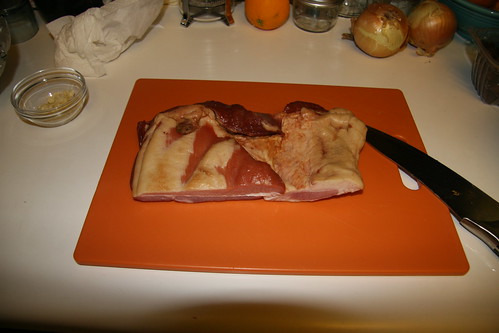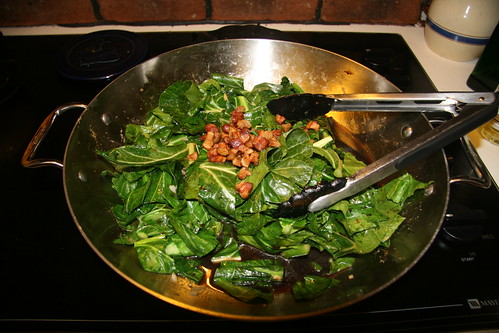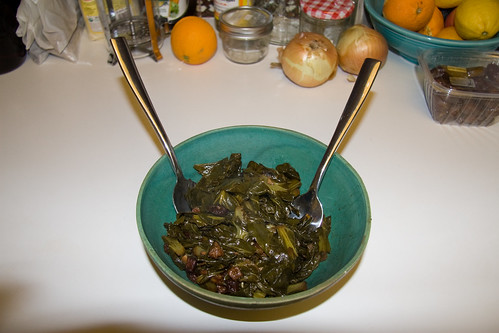I am often impressed by the resolve of Southern vegetarians. To willfully place off limits such a wide swath of one’s regional cuisine would be surprising in any instance, but when that cuisine includes such outstanding dishes as fried chicken and jambalaya and even the vegetables, such as collard greens, have meat as an integral component, it would be hard to fault anyone for renouncing their herbivosity.
One culinary trait I have noticed among my Southern vegetarian friends is both an affinity for and a skill at making fried okra that no omnivore I know has ever demonstrated. I admit to being a bit intimidated by okra preparation, afraid I will create a sticky mess. Lucky for me, as okra season arrived, one of those aforementioned Southern vegetarians expressed interest in helping me make some fried okra for Fifty Two Foods. I nearly stumbled over myself to say yes.
I picked up a pile of okra from Vue Family Farms, and our friend, Anna, brought along a few red okras from another friends’ farm. I handed her a knife and stepped aside while she demonstrated her okra technique. She began by cutting the okra into approximately inch long pieces.
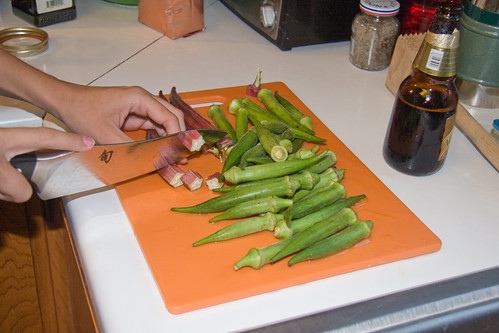
While cutting the okra, she instructed me to combine two eggs with a cup of milk in a small bowl.

Next she had me mix two parts cornmeal with one part flour.
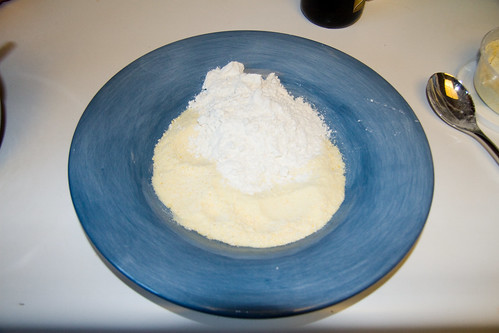
Soon we had a huge pile of sliced okra. Because there was so much, we had to batter and fry it in batches, which allowed plenty of time to eat one batch of okra while the next cooked.
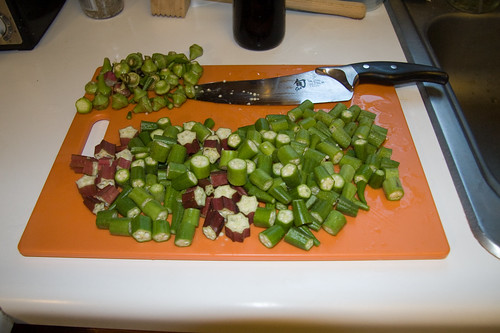
We placed a couple handfuls of okra in the egg-milk mixture and let them soak for about five minutes. Anna says that soaking it removes the sliminess that is the hallmark of poorly made okra.
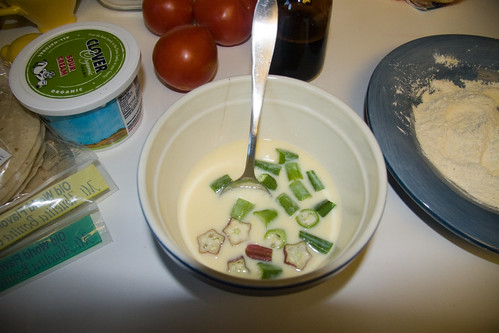
Next we rolled the okra in the cornmeal mixture.
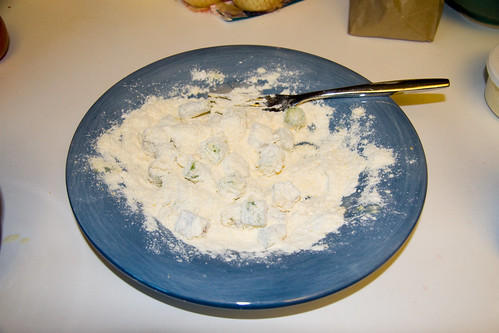
Finally, we dropped the battered okra into a pan of hot peanut oil and flipped them frequently so they cooked evenly. When they were crisp—about five minutes—we pulled them out, drained them on newsprint and sprinkled them with a little salt.

We made four or five batches in total. After the first couple, we tried adding more spices to the batter. A good spice mix was a healthy dose of “cajun creole seasoning” (paprika, onion, garlic, black pepper, lemon peel, chile, allspice, thyme, cloves, mace, cayenne and bay leaf) along with a few more dashes of cayenne pepper for heat.
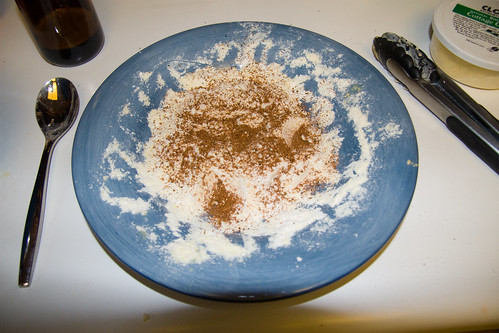
Making fried okra turned out to be pretty easy. What I lacked was direction and confidence, two things that being a vegetarian in the South must really inspire.



